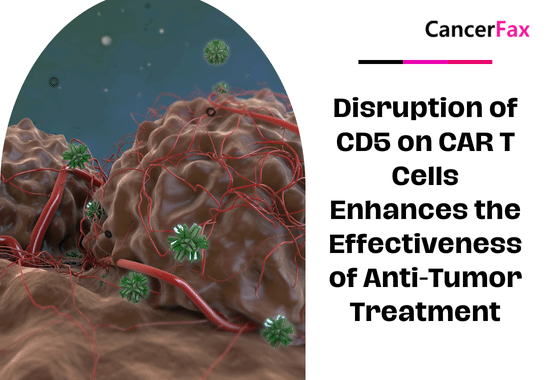The anterior lobe of the transverse colon and the pancreatic capsule and the serous membrane of the stomach originate from the same germ layer, and together form a small omental sac. Gastric cancer cells can be transferred to the pancreatic capsule through the lymphatic vessels. The shed cancer cells are likely to implant in the omental sac. It is the factor that causes recurrence after radical operation of gastric cancer. The clinicopathological factors affecting the anterior mesenteric and pancreatic capsule metastasis of gastric cancer patients include the location of the tumor, the depth of invasion, the degree of differentiation, and the TNM stage. Previously, those with low degree of tumor differentiation, penetrating the serosa, and pathological stages of stage Ⅲ and Ⅳ usually advocate omentum sac resection, but may cause local inflammation, adhesions leading to anastomosis and output loop edema, pancreatic necrosis, acute pancreatitis . Especially in the laparoscopic gastric cancer radical surgery, the mesentery and pancreas capsule peeling is more difficult, and it is easy to enter the wrong plane and cause bleeding of the mesenteric vessels in the transverse colon. In recent years, it has been controversial whether radical gastrectomy for gastric cancer will remove the omental sac. The fourth edition of the Japanese Gastric Cancer Treatment Guidelines states that for those with tumors that invade the serous surface of the posterior gastric wall, the omental sac is removed in order to remove the small disseminated lesions in the omental sac, but there is no evidence that this can reduce the peritoneum or local recurrence. And it may damage blood vessels and pancreas, so it is not recommended to remove omental sac for gastric cancer before T2 stage.
Small-scale randomized controlled clinical studies have shown that omental resection for gastric cancer that invades serous membranes can improve the prognosis. Imamura H reported 210 cases of T2 or T3 gastric adenocarcinoma in 11 centers, who underwent radical D2 gastric cancer surgery with or without omental sac resection. . 350 ml, p = 0.047), the total prevalence was 14.3% (30 cases), the two groups were the same. There was no statistically significant difference in the incidence of major postoperative complications (pancreatic fistula, anastomotic leakage, abdominal abscess, intestinal obstruction, hemorrhage, and pneumonia) between the two groups. The level of amylase in the drainage fluid was similar between the two groups (median 282 vs. 314 IU / L, p = 0.543). The hospital mortality rate was 0.95%, 1 case per group. The authors believe that an experienced surgeon can safely perform additional D2 radical gastrectomy for gastric cancer without additional omental sac resection without increasing surgical complications. Fujita J reported 210 cases of cT2-T3 gastric adenocarcinoma, randomly assigned to two groups of gastric cancer D2 radical surgery with or without omental sac resection, the primary endpoint was overall survival, the secondary endpoint was relapse-free survival, surgical incidence and The amylase level in the drainage fluid on the first postoperative day. Results The overall morbidity (14.3%) and mortality (0.95%) were the same in both groups. The level of amylase in the drainage fluid was similar on the first postoperative day (P = 0.543). The 3-year survival rates were 85.6% in the omental cystectomy group and 79.6% in the non-omental cystectomy group. The mortality risk ratio was 1.44 (95% CI 0.79-2.61; P = 0.443 non-inferior). For 48 patients with serous membrane positive (pT3-T4), the 3-year OS was 69.8% in the omental cystectomy group and 50.2% in the non-omental cystectomy group. The risk ratio of death was 2.16 (95% CI 0.89-5.22; P = 0.791 non-inferior). In the non-omental capsule group, more patients had peritoneal recurrence (13.2 vs. 8.7%). The authors believe that omental sac resection can improve survival and should not be abandoned until more data is available.
Of course, some scholars believe that omental sac resection can not improve the overall survival of subserosal or serosal gastric cancer. Eom BW reported that 470 patients with gross subserosal or serous positive gastric cancer underwent radical gastric cancer surgery. There was no significant difference in morbidity and mortality between resection groups. For multivariate analysis of overall survival, omentum sac resection was not an important independent factor (P = 0.978). Subgroup analysis of clinical and pathological stages III and IV, tumors penetrated the posterior gastric serosa, and omentum sac resection had no significant effect on overall survival (P = 0.582, 0.453, and 0.532). In patients with propensity score matching, omental cystectomy had no significant effect on overall survival (P = 0.804).
The Japanese JCOG1001 study was designed to evaluate the role of omentum sac resection in patients with subserosal layer (SS) and serous layer (SE) gastric cancer. The patient completed enrollment in March 2015. The inclusion criteria for this study included gastric adenocarcinoma confirmed by pathology, cT3 (SS) or cT4a (SE); patients were randomly assigned to the non-omental cystectomy group or omental cystectomy group, and the primary end point was OS. 1200 patients are planned to be enrolled, with a hazard ratio of 0.77, one-arm α of 5%, and a test efficiency of 80%. Results: From June 2010 to March 2015, 1204 patients from 57 centers were enrolled (602 cases of non-omental cystectomy and 602 cases of omental cystectomy). The clinical pathological characteristics and surgical procedures of the patients were well balanced between the two groups. After the patient registration was completed, the second interim analysis was conducted in September 2016, and 54% (196/363) of the expected endpoint events were observed. The 3-year survival rates were 86% (95% CI, 82.7-88.7) non-omental cystectomy group and 83.3% (95% CI, 79.6-86.3) omental cystectomy group. The relative hazard ratio was 1.075 (98.5% CI: 0.760-1.520) for the omental sac resection group, and the predicted probability of supporting the omental sac resection was 12.7%. In the omental sac resection group, the operation time was prolonged (median 222 min vs 254 min), blood loss increased (230 ml vs 330 ml), and the proportion of patients transfused was not different (4.8% vs 4.5%). Although the incidence of pancreatic fistula was slightly higher in the omental sac resection group (2.5% vs 4.8%), there was no difference in the incidence of complications of grade 3 or higher between the two groups (11.6% vs 13.3%). Five patients in the non-omental cystectomy group and one patient in the omental cystectomy group died during hospitalization. The JCOG1001 study believes that although omental sac resection can be safely performed without increasing morbidity and mortality, it is still not recommended as a standard treatment for cT3 or cT4 gastric cancer. Under the recommendation of the Data and Safety Monitoring Committee, the study was terminated early. This study enrolled 1,204 patients. It is the largest RCT study to evaluate the significance of omental sac resection. The results such as the 3-year survival rate reported this time may end gastric cancer.

